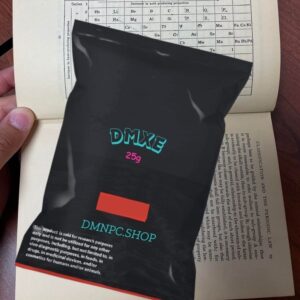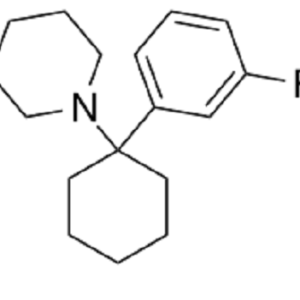C-8813 (Thiobromadol) is a synthetic chemical compound that belongs to the opioid class. It is a potent analgesic and is structurally related to bromadol, which is known for its extremely high potency as a mu-opioid receptor agonist. Thiobromadol is one of several derivatives of bromadol, modified to include a sulfur atom in its chemical structure, which may alter its pharmacological properties.
Key Characteristics of C-8813 (Thiobromadol):
- Chemical Structure:
- C-8813 is structurally similar to bromadol but incorporates a thiophene group or sulfur-containing group in place of the phenyl group in bromadol.
- This substitution may affect its receptor binding and potency.
- Mechanism of Action:
- Thiobromadol is believed to act as a full agonist at the mu-opioid receptor (MOR), the primary receptor responsible for the analgesic and euphoric effects of opioids.
- Its mechanism involves mimicking the action of endogenous opioids, like endorphins, to reduce the perception of pain and produce other opioid effects.
- Potency:
- C-8813 is considered to be highly potent, with estimates suggesting that it may be several times more potent than morphine or even fentanyl.
- Like bromadol, even microgram-level doses may produce significant effects, making it dangerous if misused.
- Effects:
- The pharmacological effects of C-8813 are consistent with other potent opioids and may include:
- Analgesia: Extreme pain relief.
- Euphoria: Intense feelings of well-being or mood enhancement.
- Sedation: Relaxation or drowsiness.
- Respiratory Depression: Reduced breathing rate, which is the most dangerous side effect of opioids.
- Physical Dependence: Risk of tolerance and withdrawal symptoms with repeated use.
- The pharmacological effects of C-8813 are consistent with other potent opioids and may include:
Risks and Concerns:
- Limited Research:
- There is little scientific data or clinical research on C-8813, making its pharmacokinetics, long-term safety, and side effects poorly understood.
- High Risk of Overdose:
- Due to its extreme potency, even small dosing errors could result in overdose. Symptoms of opioid overdose include respiratory depression, loss of consciousness, and death if untreated.
- Potential for Abuse:
- As a highly potent opioid, C-8813 has a significant risk of abuse and addiction. Its effects may lead to rapid physical and psychological dependence.
- Adverse Effects:
- Possible side effects include:
- Nausea and vomiting.
- Constipation.
- Sedation or drowsiness.
- Severe respiratory depression, especially at high doses.
- Withdrawal symptoms if use is abruptly stopped after dependency develops.
- Possible side effects include:
Legal Status:
- The legal status of C-8813 varies by jurisdiction:
- It is typically unregulated in most countries but could be classified under analog laws that regulate opioids or related compounds.
- Its possession, sale, or use is generally restricted to research purposes in scientific or laboratory settings.
Safety Concerns:
- Extreme Potency:
- The high potency of C-8813 makes it difficult to dose safely, significantly increasing the risk of overdose.
- It should only be handled by trained professionals in controlled environments.
- Lack of Medical Use:
- C-8813 is not approved for medical use and is considered a research chemical.
Disclaimer:
C-8813 (Thiobromadol) is a highly potent opioid with significant risks, including the potential for addiction, overdose, and death. It should only be used in compliance with local laws and regulations, and solely in controlled, scientific environments. Recreational use is strongly discouraged due to its extreme potency and lack of medical approval. Always prioritize safety and harm reduction when studying or handling such substanc




Julian (verified owner) –
Very well worth the money.
Camden (verified owner) –
Discrete service.
Samuel (verified owner) –
Good quality Arylcyclohexylamine.
Kai (verified owner) –
Good quality Arylcyclohexylamine.